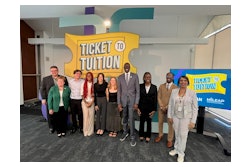New Study to Examine Effects Of Alternative Loans on Financial Aid Policy
WASHINGTON
The Institute for Higher Education Policy, the National Association of Student Financial Aid Administrators (NASFAA) and The Education Resources Institute (TERI) announced the launch of a research project that will examine the dramatic increase in privately funded, or alternative, student loans and the effect these loans have on students and higher education policy.
The project is funded by TERI, and NASFAA’s research committee will organize a series of focus groups of financial aid administrators that will provide the opportunity to discuss private/alternative loan issues on their campuses.
“Since the launch of our private loan programs over 17 years ago, there has been a dramatic increase in the need for private loan programs. We believe the research compiled by this study will help inform policy and help shape the direction these programs may take in the future,” says TERI President, Lawrence O’Toole.
“Alternative loans are one of the fastest growing areas in student aid, but the area we probably know the least about,” says Jamie Merisotis, president of the Institute for Higher Education Policy. “As we develop national policy, getting a better understanding of the alternative loan market will be critical to the development of federal loan policy and, more broadly, the development of institutional policy that affects access for students.”
The Institute and NASFAA researchers hope to address several specific concerns of the higher education community, including:
• Who is taking out private loans? What types of borrowers opt to take out alternative loans instead of, or in addition to, federal student loans?
• Why are students borrowing private loans? Are private loans being used to cover “unmet” financial need, or to fund students’ “lifestyle” or “convenience” choices?
• What are the potential policy questions that emerge in light of increased alternative lending? Would the growth in private loans be affected by any increase in federal loan limits? What effects do private loans have on loan consolidation, tuition increases, packaging of financial aid, and total student loan debt burden for colleges and students?
To examine the alternative loan phenomenon more comprehensively, researchers will make use of existing data from the National Postsecondary Student Aid Study, the College Board and NASFAA’s Survey of Undergraduate Financial Aid Policies, Practices, and Procedures (SUFAPPP), and other sources. Researchers will also conduct a limited survey of select aid administrators to assess alternative loan volumes.
“Having reliable data on alternative loans will be critical to members of the higher education community as they begin to develop their reauthorization proposals,” says NASFAA President Dallas Martin.
The project is tentatively titled “Alternative Student Loans: Sleeping Giant of the Student Aid System?” and will culminate with the release of a report in the spring.
For more information, visit the organizations’ Web sites,
© Copyright 2005 by DiverseEducation.com


















